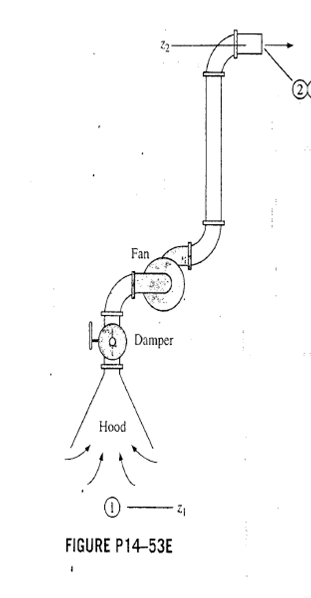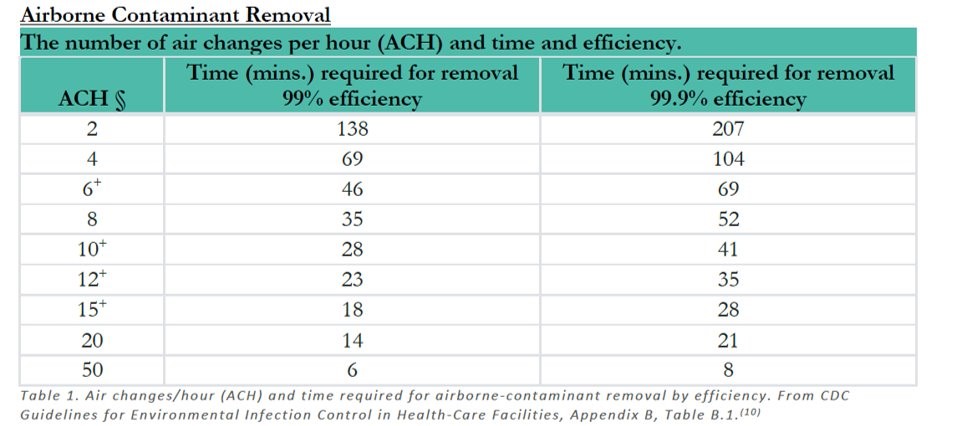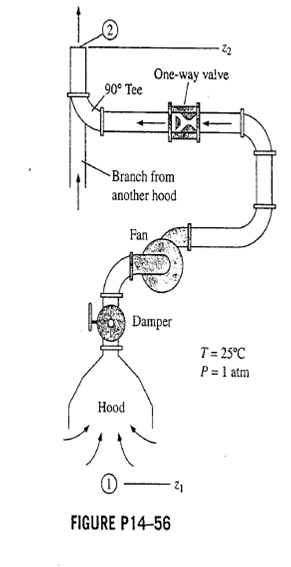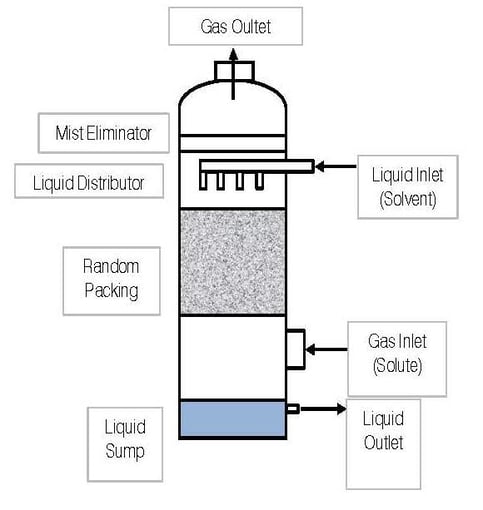Proper Ventilation Systems Remove Which of the Following Contaminants
However a worksite ventilation system must be able to work continuously to protect against the ignition of dust and corrosion caused by gases. CFCs are part of refrigerant management.

A Diagram Of The Findhorn Living Machine System Aqua Culture Holistic Treatment Findhorn
HEPA Filters in existing HVAC systems and Stand-Alone Air Purifiers HEPA filters are a step up from MERV rated air filters.

. Broadly defined ventilation is a method of controlling the environment with air flow. Airflow toward the hood opening must be fast or high enough to catch and transport the contaminant until it reaches the hood and ducts. Local exhaust ventilation systems remove chemicals and other contaminants at their source.
The movement of air can serve to dilute accidental emissions controlling contaminants that have a lower toxicity. Improper operation and maintenance of HVAC systems is one of the most common problems that impact workplace indoor environmental quality IEQ. Proper ventilation systems remove which of the following contaminants.
Different ventilation strategies may be needed in each case to remove air contaminants from the welders breathing zone. First the primary ventilation must course air through the main airways to the immediate working area outby the working faces thus making fresh air available for face ventilation and then return the contaminated air through return exhaust airways to the surface. The ventilation system removes contaminants by pulling the air and the contaminant into the exhaust hood and away from the worker or the source.
Major Ventilation Systems The objective of any ventilation system is twofold. Material off-gassing Which of the following preventive maintenance tasks would a facility manager routinely perform to maintain indoor air quality. HVAC systems include all of the equipment used to ventilate heatcool and humidifydehumidify the building.
General guidelines have been published in the CSA standard W1172 Safety in welding cutting and allied processes and the ANSI American National Standards Institute standard Z491 Safety in Welding and Cutting. Ventilation doesnt remove them. In some parts of the country where temperature and humidity levels permit natural ventilation through operable windows can be an effective and energy-efficient way to supplement HVAC systems to provide outside air ventilation cooling and thermal comfort when conditions permit eg temperature.
Its possible to install these filters in. - provides adequate outside air to maintain oxygen concentrations between 195 and 235. The general purpose of ventilation in buildings is to provide healthy air for breathing by both diluting the pollutants originating in the building and removing the pollutants from it Etheridge.
Ventilation is intended to remove or dilute pollutants and to control the thermal environment and humidity in buildings. The following is a brief introduction to the subject of restaurant ventilation along with some information on what a restaurant ventilation system should include. A true HEPA filter will remove 9997 of particles down to as small as 3 microns.
Ventilation moves outdoor air into a building or a room and distributes the air within the building or room. The type of system the contaminants. Proper ventilation systems remove which of the following contaminants.
In these systems the exhaust hood or vent is placed as. - controls contaminants produced inside the space eg welding fumes residue vapors below their PELs. For indoor environments providing some degree of ventilation supply and returnexhaust to building occupants is necessary.
Issues of comfort temperature humidity air movement can quickly arise. Viral RNA has reportedly been found on return air grilles in return air ducts and on heating ventilation and air conditioning HVAC filters but detecting viral RNA alone does not imply that the virus was capable of transmitting disease. Radon VOCs from material off-gassing and CO2 levels are some of them.
The effects can be acute or longer-term. A system for removing contaminated air from a space comprising two or more of the following elements A enclosure or hood B duct work C dust collecting equipment D exhauster and E discharge stack. Local exhaust ventilationsystems remove chemicals and other contaminants at their source.
These systems are recom-mended for controlling hazardous vapors because if designed properly they remove the vapors before workers are exposed to them. Local exhaust ventilation systems always consists of three basic components. Hoods generally remove the fumes and contaminated air through ducting and exhaust the contaminants to the outdoors.
Here are many contaminants a ventilation system should remove. - maintain flammable gas vapor mist or dust at a safe level eg LEL. The systems also serve to dilute and remove contaminants from occupied areas including.
The positive and negative effects of ventilation and ventilation systems include the following European Collaborative Action on Urban Air. Local exhaust system is used to control air contaminants by trapping them at or near the source in contrast to dilution ventilation which lets the contaminant spread throughout the workplace. General ventilation systems control the humidity and temperature of an environment.
Potential for Natural Ventilation and Operable Windows. Hoods should be placed as near as practical to the work and should provide effective air flow with a velocity of 100 linear feet 30 meters per minute at its most remote distance from the point of welding. Restaurant Ventilation Benefits Restaurants can be difficult environments to work in commonly filled with smoke odors high heat steam and excess moisture.
Local exhaust is generally a far more effective way of controlling highly toxic contaminants before they reach the workers breathing zones. Indoor Air Contaminants include but are not limited to particulates pollen microbial agents and organic toxins. The risk of spreading SARS-CoV-2 the virus that causes COVID-19 through ventilation systems is not clear at this time.
General exhaust systems are not recommended as the sole source of ventilation when hazardous vapors or mists are present because they do not immediately remove contaminants from the work space. These can be transported by the ventilation system or originate in the following parts of the ventilation system. In these cases ventilation fills the following needs.

Attic Cleaning Attic Insulation Removal Home Insulation Attic

Solved A Local Ventilation System A Hood And Duct System Is Use Chegg Com
7 Common Indoor Air Pollutants And How To Remove Them

What Is An Air Change Rate And Why Is It Important Bigrentz
Confined Space Purging And Ventilation

Pneumatic System Conditioning Ppt Download

Air Quality And Ventilation Guidelines For Response To Covid 19 And Other Airborne Infections

What Are Hepa Filters And How Do They Work Sanalife

Wondering What S A Merv Merv Stands For Minimum Efficiency Reporting Value Merv It S A Ratin Air Purifier Allergies Air Purifier Air Purification Systems

Soil Classification And Excavation Safety Soil Classification Excavation Safety

Solved A Local Ventilation System A Hood And Duct System Is Use Chegg Com

We Are Responsible For The Removal Of Visible Surface Contaminants And Deposits From Within The Heating Ventilation Amp Air Duct Duct Cleaning Clean Air Ducts

Ez Breathe Home Ventilation System Greenworks

Industrial Ventilation An Overview Sciencedirect Topics

6 Tips To Effectively Remove Contaminants From Compressed Air Chemical Processing

What Is The Relation Between Ventilation And Covid 19 Linquip

Air Pollution Control Technology Review Absorption

Contaminant Removal Efficiency An Overview Sciencedirect Topics

Comments
Post a Comment